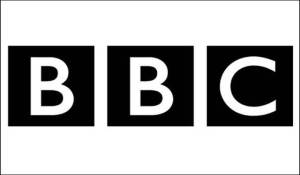The arrival of the last Wednesday of our course brought about our final agency visit to the main offices of the BBC. Headquarters was only a few blocks away from Regent’s University and is settled in the heart of Westminster.
Our tour began with the tour guide explaining all of the services and productions the BBC provides. I was surprised to learn that the BBC is funded through a tax on British citizens. This tax ensures that all Britons have access to BBC content, whether it be television, radio or online news and entertainment. This funding method is also instrumental in the BBC’s efforts to remain impartial in its news coverage and to report on all sides of an issue.
Next we were taken to another part of the building that overlooked the broadcasting giant’s enormous newsroom. As most of the building is fairly new, the newsroom had a modern, open-style concept. From above, we could see hundreds of journalists working at desks of two or three computers per person, writing copy, editing video or talking with their editors.

The tour guide explained that one side of the newsroom hosted the BBC’s journalists who focused on local or national news, while the other side reported on international affairs. He explained that before most of the BBC’s employees moved to the new building, most of the television, print and online journalists were separated across London.
The move encouraged journalists from different media to interact with one another and work more efficiently. This story reminded me of how the School of Media and Strategic Communications stresses the importance of experience in different forms of media to effectively tell a story. Nowadays in journalism, reporters are required to use writing, video and Internet skills to tell stories and inform the public.
The BBC is also reliant on the emerging sources and information coming from citizen journalism. With the extensive reach of social media, news agencies such as the BBC can pick up on news within minutes of it occurring thanks to people tweeting or posting pictures and videos online. As long as the citizen’s account is public, the BBC can use any photos posted for use in its newscasts and articles because they are legally free on the Internet. The BBC does require that two credible sources verify any story obtained from citizen journalists before they publicly release it.
As the tour continued, we learned a little bit about the BBC’s involvement in World War II. Founded in 1922, the BBC opened its first broadcasting agency in 1932. The original structure was built into the new building, but during the war its bright, white facade made it an easy target for enemy bombers. The BBC was bombed three times before employees poured oil on the building to shield it from attack. One bomb even went off during a live broadcast!

We also headed to a mock recording studio to simulate the broadcast of a radio play. The idea of finding entertainment through a show through radio waves was fascinating to me since we usually only listen to radios in our cars back at home. It was interesting to see all the ways actors can create background noises with a variety of props to help set the tone or progress a story.
